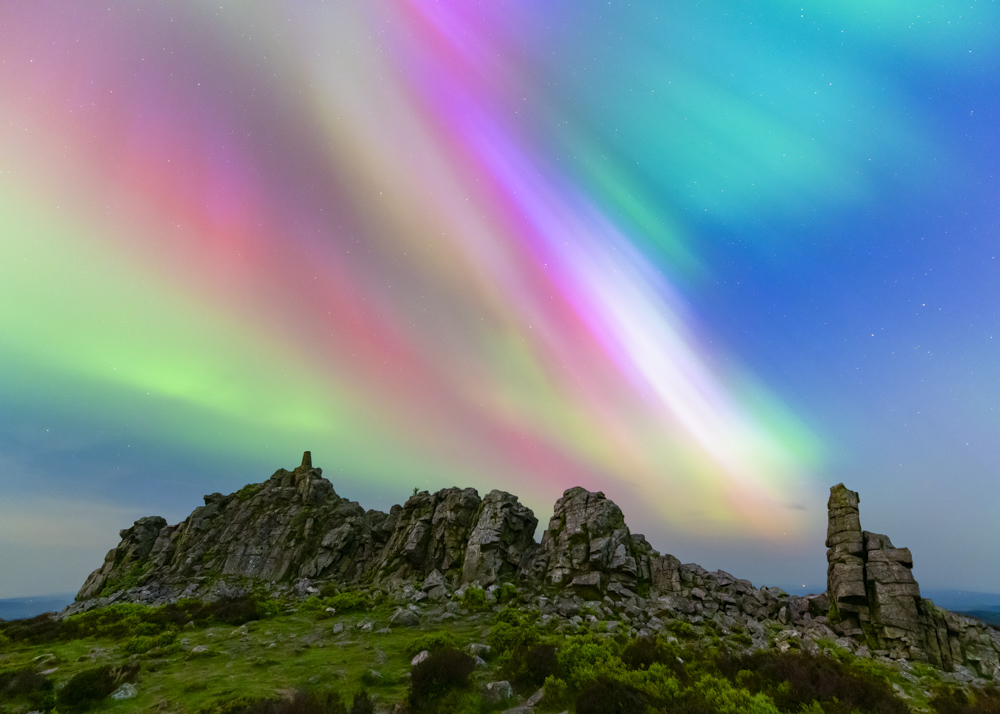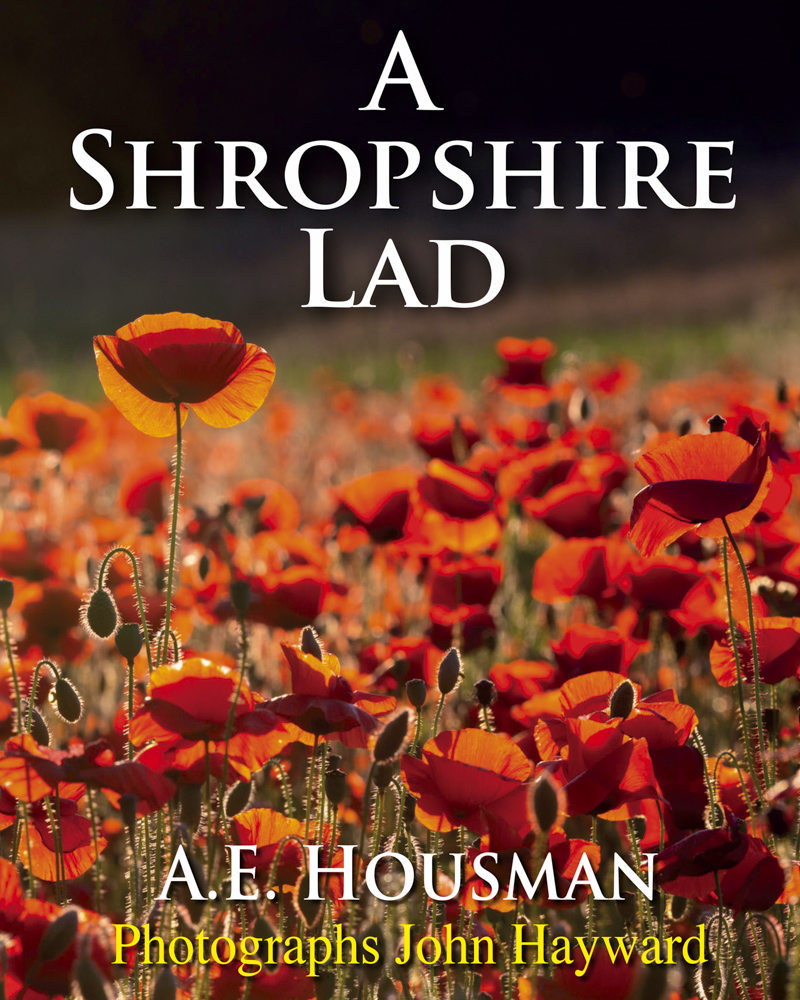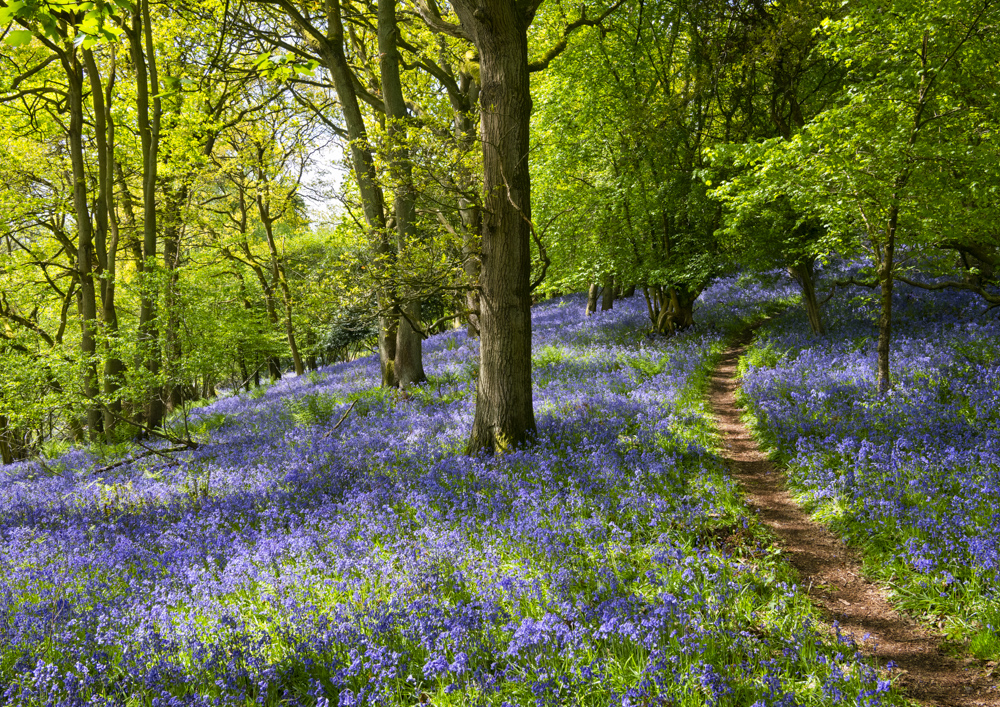Neil Thomas meets one of the region’s leading landscape photographers to uncover the story behind his success.
It’s not uncommon for John Hayward to slip bleary-eyed from his warm bed at 4am on a freezing winter morning and take an ice-cold shower to wake himself up.
Often still shivering, he fires up the heating in his car and drives off into the darkness. His destination is one of Shropshire’s many stunning rural locations where his meticulous planning has pinpointed an ideal stake-out position. Here, in the great outdoors, he sets up his camera. John has chosen the scene before him for the depth of its beauty – natural and manmade – and sometimes its quirkiness, the story it tells. Then he waits and waits, often for hours. His goal – the perfect light.
“My favourite time of day is sunrise. That, for me, is the time when the light is at its best. I wish, in some ways, sunset was better. It would make life easier,” he says with a smile.

Such is the life of a top landscape photographer. Producing the type of stunning photography which has featured in several books and earned John a high commendation in the Landscape Photographer of the Year competition, can clearly, at times, be an uncomfortable business.
John’s parents Mike and Lynne are in the room as we chat. Mike smiles and shakes his head at the mention of the cold shower, giving the impression he thinks the idea insane.
Lynne, on the other hand, doesn’t hold back. With a broad smile she declares: “He’s mad! It’s masochistic.”
I’m inclined to agree but you clearly have to suffer for your art. And art it very definitely is. In the age of sophisticated iPhones and digital cameras, the notion pertains that anyone can take a good photograph.
John smiles good-naturedly at the thought. “I’ve occasionally had people say to me, when they’ve seen some of my best pictures in one of the books, ‘you must have a good camera’.”
True enough, today’s sophisticated equipment may produce high image quality but what of light, subject matter, composition and that indefinable quality that makes the viewer’s spirits soar – call it the ‘wow’ factor. The camera alone cannot furnish you with those.
Many of John’s photographs have the ‘wow’ factor. His spectacular photograph of the aurora borealis (Northern Lights), captured in May this year, is a case in point. Much planning, hard work and, now and then, physical discomfort, goes into achieving the end product. Not to mention huge reserves of patience (“Five hours camped out on the Stiperstones for 20 minutes of actual photography”). Just occasionally, you need a little luck.

“Weather plays an important part and I’ve always got apps open checking the forecast – daily, medium and long term,” he explains. “Though you can produce good photographs in the rain, I much prefer sunshine. The light is just so much better to work with. This summer has been quite frustrating and there have been several days I’ve not been able to get out,” John adds, referring to the many unseasonal rainy or overcast days.
For all the preparation that goes into John’s work, he possesses that other significant quality that so often produces the outstanding image – the ability to think on your feet. A case in point was when he was at a remote spot amid the Shropshire Hills. The landscape was beautiful as John gazed out upon Caradoc hill but, on this day, desolate. To all intents and purposes, he felt like the only man on earth. Then, silhouetted on the far horizon, emerging from a swirling mist came a lone hiker. A potentially striking photograph presented itself if John acted quickly, for the walker was moving at pace. He swiftly set up the shot – only to realise the camera was fitted with the wrong lens for the type of picture he was looking for. He scrambled to make the change but the man was in danger of moving out of view. John thought his chance had gone when, abruptly, the man stopped to admire the view. The photographer got his shot.
“That’s where luck comes in,” John says with a smile.

The result was a remarkable picture, good enough to feature in the most recent book of John’s photography. A Shropshire Lad was published in 2023 and is a full colour photographic edition of A E Housman’s lyrical English poem, first published in 1896.
John was commissioned by renowned Ludlow publisher Merlin Unwin to produce a collection of photographs to marry to the poem. The result is the only photographic edition of A Shropshire Lad in which the county’s stunning landscapes, scarcely altered since Housman’s day, have been matched with the stanzas on each page.
It was a potentially daunting challenge to illustrate one of the best-known works in the English language, whose enduring international popularity lies in its exploration of universal themes – nostalgia, love and loss.
John’s photography has risen to the occasion – his images capturing the beauty and solitude of rural Shropshire, from picturesque Clun to the bleak rise of the Stiperstones. In all, the glossy 128-page book features 91 of John’s photographs, a diverse range of striking imagery that is a powerful adjunct to Houseman’s lyricism.
The publication, produced to mark the 50th anniversary of Housman Society, has been well-received with strong sales.

“I wonder if the walker on Caradoc realises he’s in a book,” muses John with a smile.
This is John’s third collaboration with Merlin Unwin. The previous two books, A Year in Shropshire (2017) and Shropshire from Dawn to Dusk (2020) were produced in partnership with dad Mike, a former newspaper and magazine photographer. Journalist Lynne is also heavily involved in various of the projects, including research and writing for the books, making it a real family affair.
“I’ve very much got a background role,” she adds modestly.
Mike’s passion for street life – offbeat characters and quirky architecture – and Shropshire’s rural customs (Morris dancing, Clun’s Green Man Festival) perfectly complements John’s love of the county’s natural beauty etched deeply into its breathtaking landscape. Indeed Mike, after years as a leading landscape photographer himself, now concentrates on street photography. “I leave John to climb the hills,” he says with a smile. The results ensure a rich variety of people and places, buildings and open spaces, within the pages of their books.
Following in his father’s journalistic footsteps, John’s photography has appeared regularly in national and regional newspapers and magazines.
His business, Shropshire and Beyond, incorporates a photographic library which he set up with Mike, to showcase the very best that the county and its borders – Wales, Staffordshire, Herefordshire, Cheshire – have to offer.

The archive needs frequent updating and refreshing, not least because of the subtle variations in the landscape over time, the gradually changing climate and human interventions such as new building, demolitions and refurbishments.
“Trees grow, obscuring views we once had, changing the scenery,” Mike explains. “We don’t really have snow like we used to. Climate change means snowy days are rarer events.
“There are changes you can’ legislate for. It was drastic for us when they changed the colour of the Ironbridge, so all the pictures we had of it were suddenly out of date.”
The milder winters are a particular issue when it comes to one of the Haywards’ most lucrative revenue streams – calendars.
“Obviously, you really need 12 strong images that not only celebrate all areas of Shropshire, north, south, east and west but also reflect the changing seasons. When the seasons don’t change like they used to, it’s a challenge,” John admits.
A wintry scene is a thing of beauty but how do you capture it when we don’t seem to have the snowfall or the hard frosts to the extent that we did even 20 years ago?
“If snow is forecast, I need to be ready to travel around the county to get as many photographs in different places as I can, in the bag,” John says. “It means an early start and travelling conditions that aren’t always the best.”
It helps that after years of travelling the county’s highways and byways, John knows all the best lay-bys to park in, and all the best vantage points in which to set up the camera. He may reuse favourite spots but always comes back with something different for weather, season and light are constantly changing. And it helps that he is always looking for something different and has the patience and skill to capitalise on it.

Home for the Haywards is a picturesque rural cottage, set in the grounds of an old mill near Shifnal. An office is situated in an attractive wooden-clad building set apart, where the day-to-day business is run.
This includes processing print orders and website sales as well as organising the distribution of merchandise to retailers. Aside from calendars showcasing Hayward photography, there are tourism-based spin-offs like postcards and fridge magnets championing Shropshire’s glory.
Another strong seller in the Hayward catalogue might surprise you – 1,000-piece jigsaw puzzles.
“They are really popular,” Lynne says. “It seems people still like a jigsaw puzzle”.
At one time a Christmas or birthday gift staple, the jigsaw puzzle seemed to have fallen out of fashion as children’s toys and gifts became ever more sophisticated. But it seems they are still very much in vogue. Perhaps their enduring appeal speaks to that yearning for the past so lyrically evoked by A Shropshire Lad, harking back to family Christmases when the dining table would always be covered in jigsaw pieces as family members gathered around to throw in suggestions of what fitted where. And the reward for completion, in the case of a Hayward jigsaw, is a stunning landscape of Shropshire.
Given the imagination and skill of John’s work, the demand for his images from national – indeed international – media agencies, it comes as something of a surprise to learn that he wasn’t particularly interested in photography growing up.
It wasn’t, as you might have imagined, a case of him being inspired by Mike and wanting to follow in his father’s footsteps. Aside from his newspaper and magazine work and brilliant landscape photography, Mike built up an extensive archive of classic British motor sport images. Yet not even the thrill and glamour of this seemed to tempt John to follow suit.
He studied media production at university but there followed jobs that had no connection with still photography.
“Eventually, I was in a job that did not particularly satisfy me and at that point Dad suggested I came into the family business.”
John discovered he had a talent for it – and that he could marry it to his love of the breath-taking beauty of the Shropshire Hills by taking up landscape photography as a profession.
Now he will happily scramble up a steep hill in the darkness before daybreak, two-stone of equipment strapped to his back like a commando on a route march.

“I think of all the people who would love to see the views from the top of the Long Mynd or Stiperstones or Caradoc, but because of age or other reasons, can’t get up there. I do their climbing for them so they get the chance to enjoy the views.”
John’s photographs invariably have an interesting or offbeat story behind them, which makes him a popular speaker at photographic societies WI branches and other local groups.
“I enjoy doing them and, with the WI, you can guarantee that the cakes will be really good,” he adds with a smile.
Now in his late 30s, John Hayward is at the top of his game. He is capturing Shropshire – simply one of the most beautiful counties there is – for generations to marvel at for as long as his photographs, books, calendars, indeed jigsaws, are around.





